Method 1: Dehydrator
You don’t have to soak seeds before dehydrating. If you do, expect a longer dry time. Spread in a single layer on dehydrator trays, set to 130°F–140°F, and dry for 12–24 hours until crisp.
Here at Easy Food Dehydrating, “dehydrate” always means using an electric food dehydrator — the easy, reliable way to dry food at home.
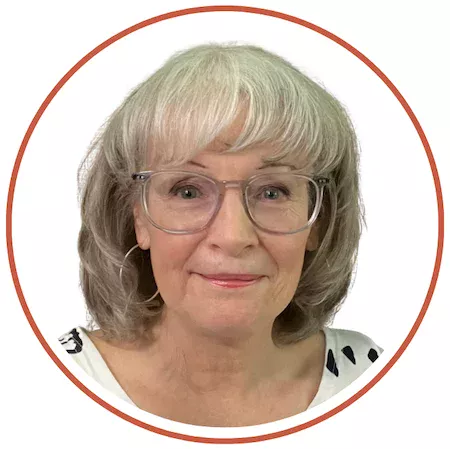
How to dehydrate nuts and seeds in, well, a (rather long) nutshell...
If you love the crunch of nuts and the health boost from seeds, dehydrating them at home is a game-changer. Not only does it extend their shelf life, but it also makes them easier to digest by reducing phytic acid.
The process is simple, and once you know the right steps, you’ll enjoy fresher, tastier snacks every time.
✅ Quick Answer: How do you dehydrate nuts and seeds?
Spread soaked (or raw) nuts and seeds on dehydrator trays at 115–140°F for 12–24 hours until crisp. Ovens also work at low heat, while sun-drying is riskier. Dehydrating improves flavor, shelf life, and digestibility by reducing phytic acid.
Whether you’re prepping almonds for crunch, pumpkin seeds for trail mix, or walnuts for baking, dehydrating helps preserve flavor and nutrition while giving you total control over salt and seasoning.
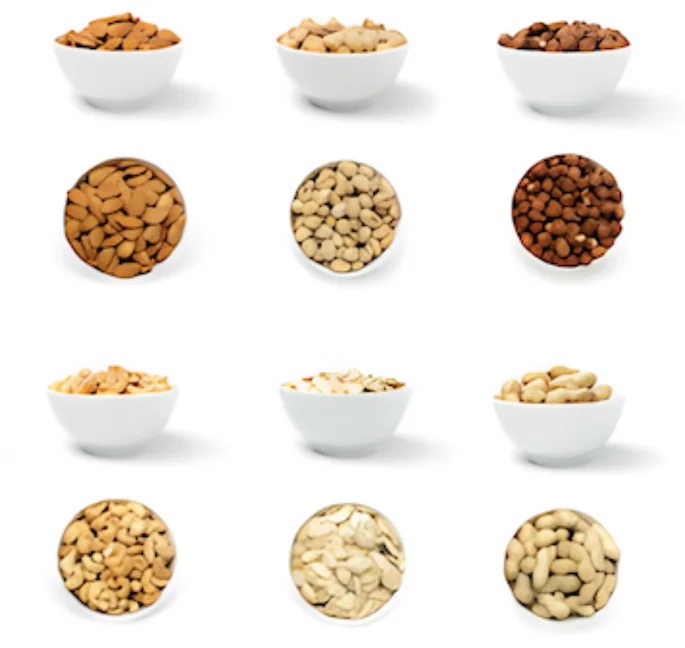
I want to mention the health benefits for your digestive system - and why soaking and dehydrating nuts is important - and also why it impacts the nuts' Phytic acid content.
Please Note: Due to the soaking, their drying times will vary.
When you are ready to dehydrate nuts and seeds, it's an easy process. I use a dehydrator, but you can use a regular oven - or even the good old sunshine!
If you're concerned about preserving texture and flavor, use a dehydrator. Doing so also helps protect against rancidity because nuts have a high fat content.
NOTE: Read the individual nuts and seeds sections coming up for their specific instructions about whether or not to soak them first.
💡 Tip: Outside the U.S.? Most dehydrating temps here are listed in Fahrenheit - use our quick converter to see the Celsius equivalent for your machine.
You don’t have to soak seeds before dehydrating. If you do, expect a longer dry time. Spread in a single layer on dehydrator trays, set to 130°F–140°F, and dry for 12–24 hours until crisp.
Preheat to 130°F–140°F. Spread nuts or seeds on a baking sheet and bake 1–2 hours, stirring with a spoon or spatula about every 30 minutes, until crisp.
Spread in a single layer on a clean towel set on a sturdy baking sheet. Place in direct sunlight for 1–2 days, turning occasionally so they dry evenly, until crisp.
Caveat: Keep a close watch on them if you've got nut-loving critters hanging around. When fully dried, store the nuts in an airtight container in a cool, dark place. Drying in the sun is my least favorite way of drying nuts. Too risky - rain, squirrels, etc.
Many folks prefer to soak the nuts first - some don't. Soaking improves flavor and texture. Make sure you drain the nuts thoroughly before dehydrating them to prevent mold growth!
Lessen the risk of rancidity when soaking nuts first by dehydrating them as soon as you can after soaking them. And that's why people skip the soaking step!
Pre-soaked nuts will take longer to dehydrate as stated earlier, which makes sense, right?
Phytic Acid is a compound that's in the hulls of nuts, seeds, grains, and fruits. It can prevent the absorption of nutrients and it can also bind to minerals in the gut which then prevents the nutrients from being absorbed by our digestive system..
So, soaking the nuts removes the Phytic Acid which is a good thing!
Nuts:
See how to safely dry nuts for long-lasting flavor and freshness.
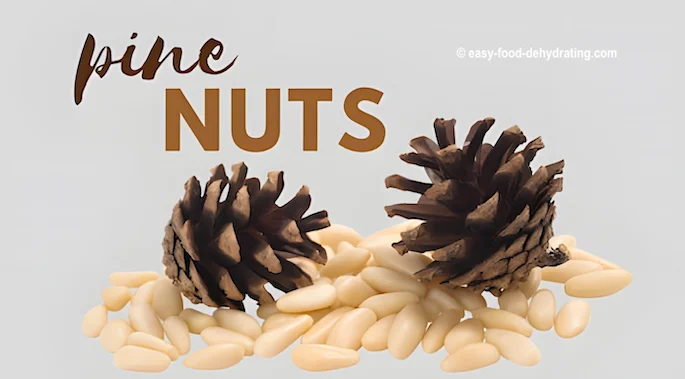
Spread the pine nuts out smoothly on a dehydrator tray and dehydrate them at 115°F for 12-24 hours. You'll know they're done when they're crisp and have no moisture left. Don't over-dry them because they may burn more easily.
Pine nuts are great for use in baking or as a topping on salads or pasta - and snacking too. Dehydrated pine nuts will last up to 6 months in an airtight container when stored properly in a cool, dark place.
Soak pine nuts in water for 30 minutes to rehydrate them, then drain well.
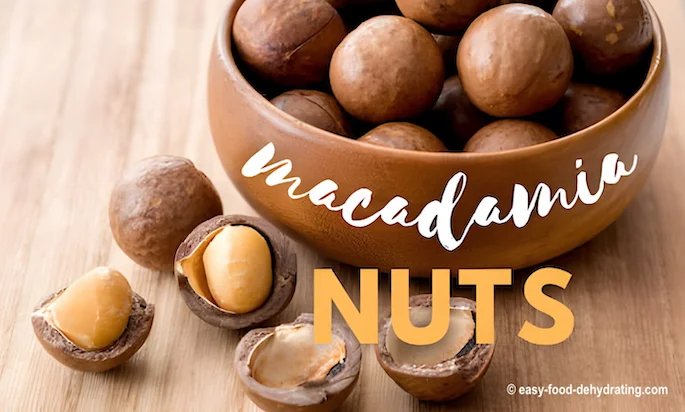
Macadamia nuts can be eaten raw, roasted, or dehydrated. It's a great way to preserve them for long-term storage. Dehydrating preserves their flavor and nutrition.
Peel the nuts and then soak them in water for at least 24 hours. Next, drain them and allow them to air dry.
Dehydrator: Arrange them on dehydrator trays and dry them at 100°F - 140°F.
Regular Oven: Use a low temperature of 200°F, until completely dried.
Macadamia nuts are a great source of healthy fat, protein, vitamins, and minerals and are pretty low in carbs and calories.
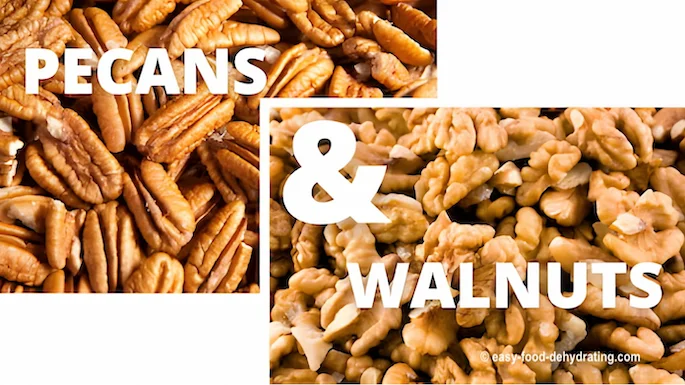
Add pecans and walnuts to recipes such as my delicious fruit bars, or add them to granola and trail mix, too.
Dehydrator: Rinse the nuts and put them on your dehydrator trays, and set the temperature between 105°F - 150°F for 12-24 hours, turning them occasionally, until they are dry and crisp.
Oven Dry: Spread the nuts out on a baking sheet and bake at a low temperature (200°F) for about two hours, or until the nuts are dry and crisp.
After they've cooled down you can store the nuts in an airtight container such as a Mason jar. They'll keep for six months to a year.
Making Crispy Nuts
Making crispy nuts is easy! Preheat your oven to 350°F and spread the nuts on a baking sheet and roast for 10 minutes.
Take out of the oven and let them cool down completely.
Raw Nuts
People have been eating raw nuts (and seeds) for centuries and many cultures consider them a delicacy. By 'raw' I mean that it has not been roasted or cooked in any way. When eaten raw, they are a healthy, nutritious food that is safe to eat. We're not talking 'raw meat' here.
To rehydrate dehydrated nuts, I soak them in water for a few hours. Once rehydrated, you can eat them "as is" or use in recipes.
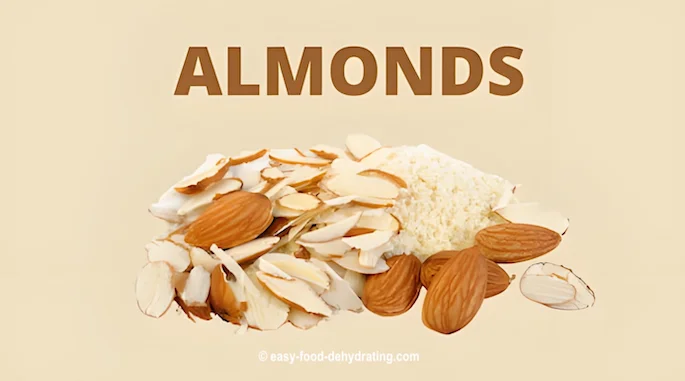
Almonds grow on trees and have brownish-white skin and creamy-white flesh. Raw almonds are the seed of the fruit that are encased in their hard shells.
They are used in both sweet and savory dishes and I enjoy eating them raw. I also love almond milk - and you can buy or make almond butter, and almond flour. Scatter almonds on top of salads for an extra crunch, and add them to desserts.
Almonds are also a good source of fiber and protein and are packed with Vitamin E and magnesium.
Studies have shown that eating almonds can help lower cholesterol levels and improve heart health. When we eat almonds, it's linked to better brain function, and a reduced risk of Alzheimer's disease.
Seeds:
Should you skip seed-soaking? Read on to find out which seeds need soaking first.
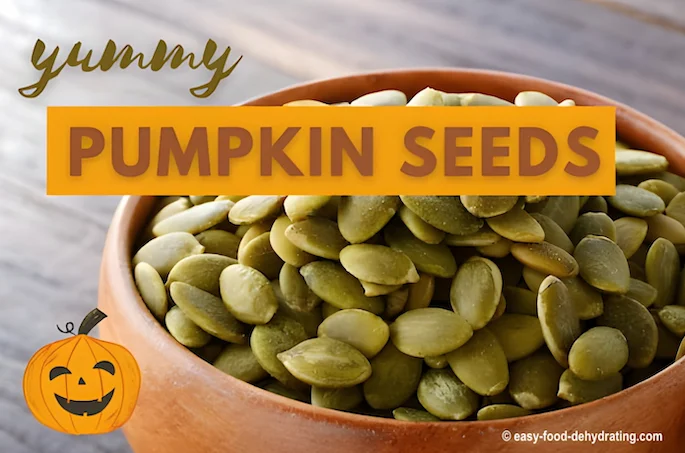
Get ready to dehydrate your pumpkin seeds and read more about dehydrating pumpkin (flesh) here! Gain total control over the level of saltiness by drying them yourself. They are also known as "pepitas" and I love them sprinkled inside a turkey wrap!
Start with raw, hulled pumpkin seeds and soak them overnight in water, then drain them and spread them out on dehydrator trays.
Dehydrate the seeds at a low temperature until they are crisp (100°F). You can then add salt to taste - or add salt after roasting in an oven (see below).
Roasting pumpkin seeds is a simple process: just toss the dehydrated seeds in a bit of canola oil (has a higher smoke point) or olive oil (has a lower smoke point) then roast them at 325°F for 20 to 30 minutes until they are brown and crispy. Keep an eye on 'em.
After roasting, sprinkle on the salt and toss.
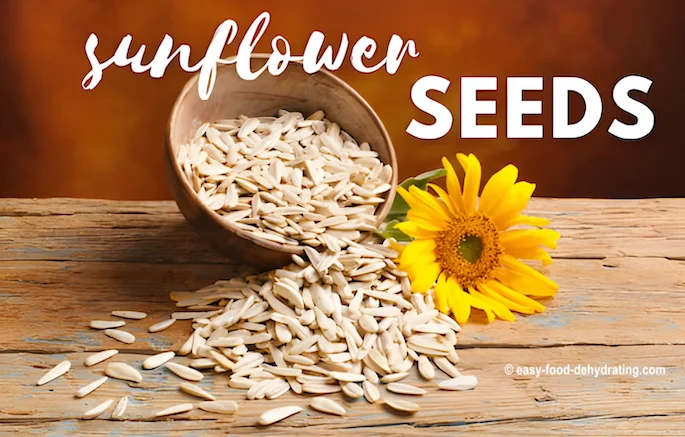
Sunflower seeds come from the sunflower plant (not surprisingly!) and the scientific name for them is Helianthus annuus (honest!)
Sunflower seeds are delicious salted as you know, and are also used to make sunflower butter and sunflower oil.
How To Make Sunflower Seeds:
Soak the seeds in water for a few hours. Drain them and then spread them out on dehydrator trays. I use solid sheets so I don't lose them through the dehydrator's plastic tray webbing! Dehydrate them between 115°F - 120°F for 12-24 hours, or until they are crisp.
Once dehydrated, roast the seeds in the oven at a low temperature (around 200°F) until they are browned and fragrant. Then I add salt to taste.
Sunflower seeds are a healthy snack that I enjoy eating roasted, as part of a trail mix, or as an addition to my salads or baked goods.
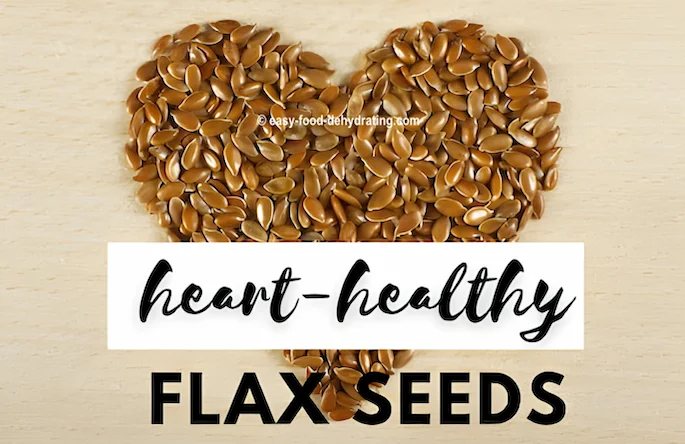
Flax seeds are a great source of fiber, vitamins, and minerals and can be eaten raw or dehydrated. My mom was "nuts" about them (pun intended). Soaking or dehydrating flax seeds helps to release enzymes that make them easier to digest.
They are also a good source of magnesium, and Omega-3 fatty acids. I add flax seeds to smoothies, oatmeal, yogurt, and baked goods.
Experts over at Healthline say that adding flax seeds to your diet can aid in digestion, heart, and joint health. Long live flax seeds!
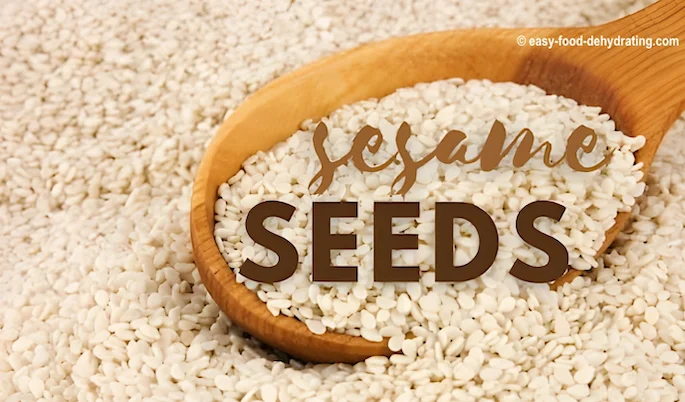
I find sesame seeds to be a bit tricky to work with. If not dried properly after soaking (overnight, or 4-8 hours), they spoil quickly.
The Oven-drying Method: Spread the seeds out on a baking sheet or a silicone mat then put them in a preheated 250°F oven for around 15 minutes. Check your seeds regularly and stir them. Remove your seeds from the oven as soon as they are dry. Don't let them burn in the oven! We're looking for a light golden color and crispiness.
Air Drying Method: Put your seeds on a clean towel and allow them to air dry. You need a lot of spare counter space for this!
And my favorite method? Dehydrate them! It's a great way to extend their shelf life and make them easier to store.
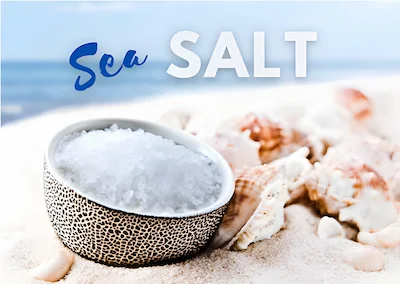
If you're looking for a way to add some extra flavor to your nuts, I love using sea salt.
The saltiness of sea salt enhances the flavor of nuts, making them even tastier!
Sea salt also helps keep our dried nuts fresh for longer, too.
When stored in an airtight container with sea salt, nuts will stay fresh for up to six months.
I use filtered water when soaking my nuts as this helps to remove any impurities that could spoil the dehydrating process, as well as making it easier to remove the skins later on (where applicable).
I simply soak the nuts or seeds in filtered water at the length of time specified in the nut or seed which is mentioned in their sections above, then drain them thoroughly before dehydrating.

Now we're ready to store our tasty nuts and seeds for long-term storage.
I find the best way to store them after dehydrating is in Mason jars
(as mentioned throughout this post), in a cool, dark place - like a
pantry. Nuts and seeds will last for several months when stored this way. Pop in an oxygen absorber inside the Mason jar for extra protection.
I label the containers with the date I dehydrated them so I can rotate the old and the new jars on my shelf.
If you have a few tips up your sleeve, share them! I’d love to hear about your experiences with how you dehydrate nuts and seeds!
Drop me a line here at Easy Food Dehydrating.
So, there you have it! The basics on how to dehydrate nuts and seeds and whether to soak and dehydrate them, or just simply skip the soaking.
Do I need to soak nuts before dehydrating them?
Soaking isn’t required, but it improves texture, reduces phytic acid, and makes nuts easier to digest. Just dry them right after soaking to prevent mold.
How long do dehydrated nuts and seeds last?
Stored in airtight containers (like Mason jars with oxygen absorbers and desiccant packets), dehydrated nuts and seeds last 6–12 months in a cool, dark pantry.
What’s the best temperature for dehydrating nuts and seeds?
The ideal range is 115–140°F in a dehydrator. Lower temps preserve more nutrients, while slightly higher temps shorten drying time.
So there you have it — the simple steps to dehydrate nuts and seeds for better flavor, longer storage, and easier digestion. Once you get the hang of it, you’ll love how versatile these crunchy snacks can be in everything from salads to baked goods.
And before you go, be sure to grab your free 5 Dried Food Recipes You'll Actually Love PDF below — including carrot soup, minestrone, split pea soup, spicy beef jerky, and banana cinnamon rolls. They’re perfect for putting your dehydrated foods to tasty use!
Here's where you can get your copy of our all new
5 Dried Food Recipes (That Actually Taste Great)
They're my all-time favorite easy dried food meals!
Get it here right now.
For Free!
If you enjoyed this page, tap the ❤️ in the lower right-hand corner.
It saves this page to your Grow bookmarks so you can find it again later.
You’ll also see quick share buttons to copy the link, post to Facebook,
or save it straight to Pinterest.